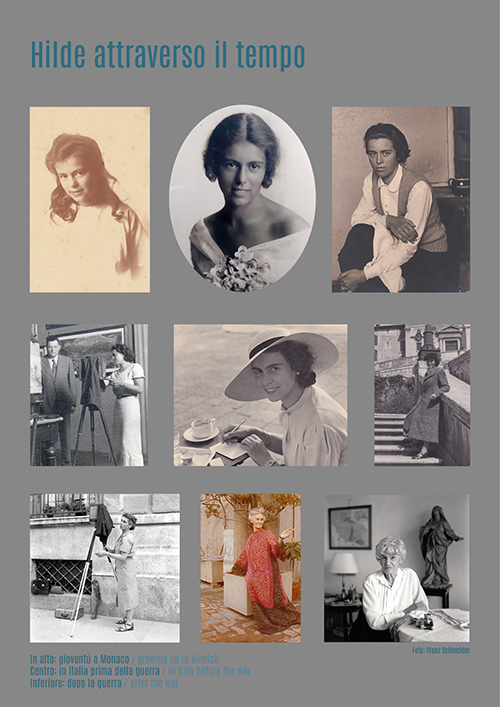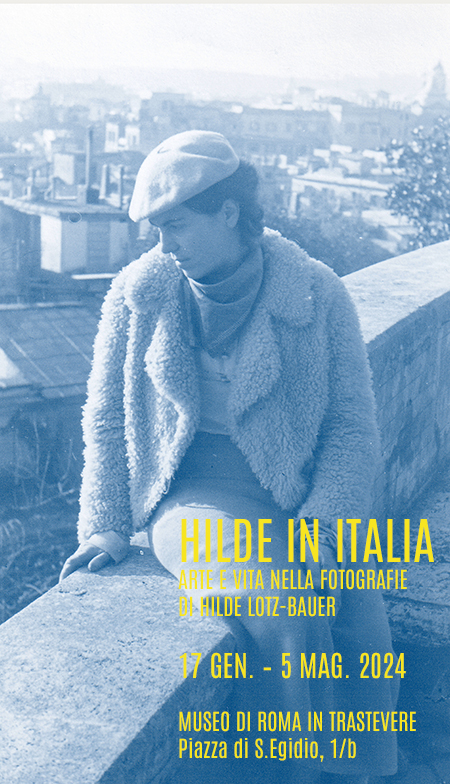
HILDE IN ITALIA
Arte e vita nella fotographie
di Hilde Lotz-Bauer
A walk around the exhibition
with Robbie Griffiths
Hilde in Italia at the Museo di Roma in Trastevere is the first time that the diverse aspects of Hilde's work can be viewed together. In addition many, if not most, of the photographs have never been on public view. Previous exhibitions have featured her professional work using glass plate cameras or her Leica work displaying some of the photos held by Franz Schlechter in Heidelberg or by the Hilde Lotz-Bauer Family Archive (HLBFA) in London. This 'two-fold gaze' is what the show's leading curator, Dr. Federica Kappler, is seeking to explore, so here's what I learnt from the show.
Room 1
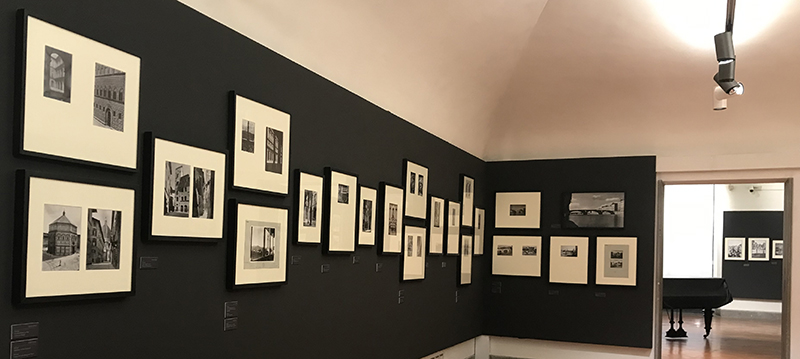
Room 1: Florence images from KHI and HLBFA
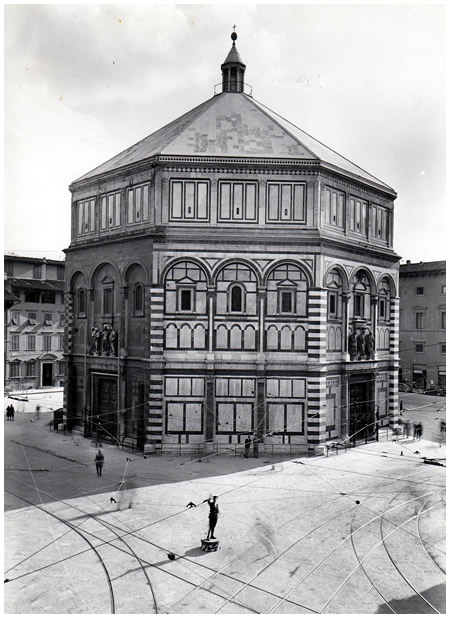
Battistero di San Giovanni:
A rather surreal image of a traffic cop directing
an absence of traffic, perhaps connecting her
glass-plate photography to her Leica ones!
Room 1 is devoted to Hilde's professional commissions for the two German art historical institutes – the Kunsthistorische Institut in Florenz (KHI) and the Bibliotecha Hertziana in Rome. Both institutes offer scholars research materials, and Hilde provided them both with a large number of architectural, sculpture, drawings and city scenes which have been pasted onto cards (see below), several of which are shown in the exhibition.
Dr. Ute Dercks of the KHI and Dr. Regine Schallert of the Hertziana have also researched the commissions Hilde received to illustrate the work of art historians at both institutes and abroad. Ute reveals how essential Hilde's illustrations were to the research of Friedrich Kriegbaum, whose untimely death prevented publication of his 'Florence Book', the photographs however being the basis of Hilde's 1977 exhibition at Palazzo Strozzi in Florence where around 140 were shown. Regine throws light on Hilde's most important commission at the Hertziana for Leo Bruhns who entrusted her to carry out an independent campaign in Sicily after her successful tour with him to Puglia. She also demonstrates that the German art historian Wilhelm Reinhold Valentiner who was based in America could not have advanced his theories without her photographs.
It may be of inspiration to young women today that Hilde was never an employee of either of these institutes, depending on commissions, first at the Hertziana between 1934 and 1939, then at the KHI from 1939 until she was forced to leave Florence in 1943, just as Italy changed sides in the war. So not only was she a pioneer in photography, her method of maintaining a living as a freelance is akin to the experience of many young people today.


Cards from Hertziana showing Termoli (l) and KHI showing Ponte Vecchio (r)
Both Ute and Regine provide additional story-telling material about some of their exhibits: Palazzo Guadagni & Ponte Santa Trinita (Ute) and Trionfo della Morte & Swabian castles (Regine).
Room 2

Room 2: Franz Schlechter photos
Room 2 displays Hilde's personal work, almost all captured with a Leica (but with 6 small Rolleiflex contact prints of Florence in the snow). The most spectacular are the newly commissioned prints from Franz Schlechter. To the left are city shots (mostly Rome) and facing as you enter is the captivating portrait of a young girl.

The right side of the room continues with the theme of children, then further to the right, what Hilde termed her Land und Leute photos and then a compilation of five Scanno photos.
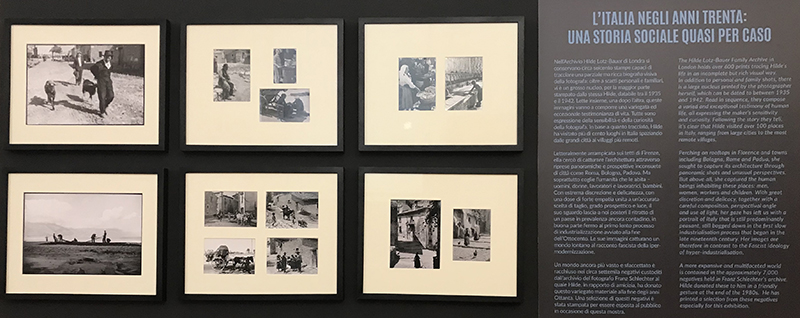
Room 3
This last small room had a compilation of photos of Hilde, a small cabinet and a most insightful video by Madelaine Merino.
Conclusion: does the show fulfil its promise?
On the face of it, Hilde's professional and personal photos are very different. Her images for art historians are devoid of people (Kriegbaum insisted on it) and we have before us images of Florence taken during the war almost impossible to conceive of with today's mass tourism. Her personal photos are, on the other hand, almost all about people. So what connects them?
 Glass plates were expensive and extremely heavy, so Hilde was meticulous about setting up the camera and then waiting for the light to be perfect. This can be seen in her Florence photos, and perhaps most acutely in her images of the columns of the Palazzo Strozzi courtyard.
Glass plates were expensive and extremely heavy, so Hilde was meticulous about setting up the camera and then waiting for the light to be perfect. This can be seen in her Florence photos, and perhaps most acutely in her images of the columns of the Palazzo Strozzi courtyard.
Examination of her most iconic Leica photos, reveals how she also set up the camera, carefully framing the background as if a stage, then waiting for some magic to appear before her lens. For me, this realisation was particularly developed by watching Madelaine Merino's video as it is composed almost entirely of contact sheets, so we can see Hilde's method over consecutive images.
Here are just three images from the show that illustrate this (the first two are from the Schlechter archive, the third HLBFA):
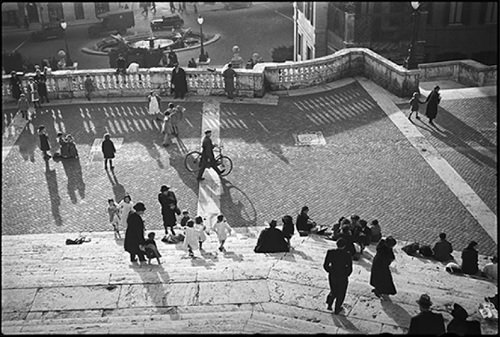
Looking down from the top of the Spanish Steps, Hilde waited for the exact moment the man straddled the white line and positioned the shadow of his front wheel..
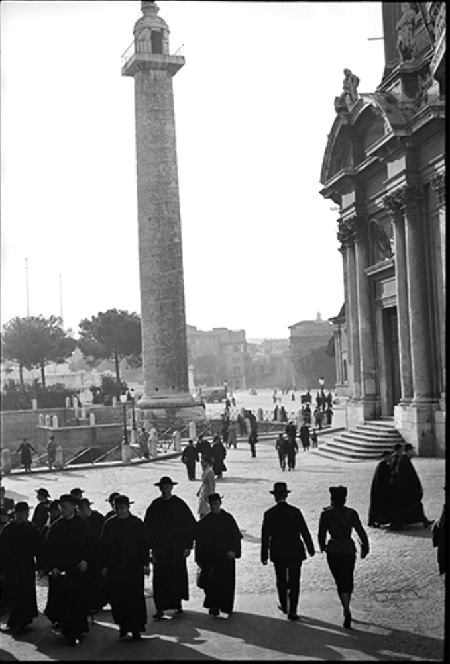
Hilde has carefully framed Trajan's Column and the facade of Chiesa del Santissimo Nome di Maria, then waited... and behold a flock of priests appear at the same time as a very curvaceous woman, thus providing us with this sacred and profane image. It is clear that Hilde set up the exposure for the 'stage' as the actors are a little under-exposed, but this only adds to the atmosphere, as only their outlines are necessary.
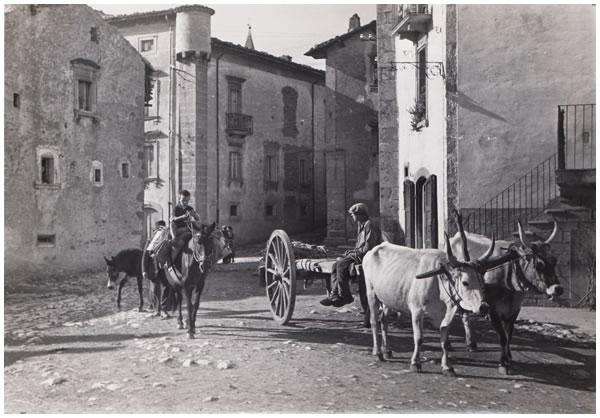
Here the stage is Palazzo Grilli in Pescocostanzo, and wait long enough and there might appear from around the corner... oxen, a cart and boys on donkeys.
The show has fulfilled the curators' ambitions. QED.
